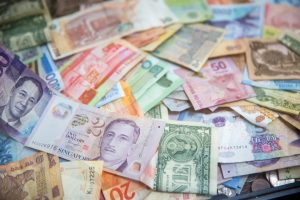Forex trading has become increasingly popular over the years, with more and more individuals trying their hand at it. When it comes to forex trading, the aim is to make a profit. However, what constitutes a reasonable profit factor in forex? In this article, we’ll delve into the concept of profit factor and explore what a reasonable profit factor in forex is.
Before we dive into what a reasonable profit factor is, let’s first define what profit factor is. Profit factor is a measure of profitability that is calculated by dividing the gross profit by the gross loss. The gross profit is the total amount of money made from winning trades, while the gross loss is the total amount of money lost from losing trades.
For example, if a trader made $10,000 from winning trades and lost $5,000 from losing trades, their profit factor would be calculated as follows:
Profit factor = Gross profit / Gross loss
Profit factor = $10,000 / $5,000
Profit factor = 2
A profit factor of 2 means that for every dollar lost, two dollars were gained. A profit factor of less than 1 means that for every dollar lost, less than a dollar was gained. A profit factor of greater than 1 means that for every dollar lost, more than a dollar was gained.
So, what is a reasonable profit factor in forex? The answer to this question is not straightforward, as it depends on a number of factors. Some of these factors include the trader’s trading style, risk tolerance, and trading system.
For example, a trader who has a high-risk tolerance and prefers to take on larger trades may have a higher profit factor than a trader who has a low-risk tolerance and prefers to take on smaller trades. Additionally, a trader who uses a high-frequency trading system may have a higher profit factor than a trader who uses a system that trades less frequently.
However, in general, a profit factor of 1.5 or higher is considered reasonable in forex trading. This means that for every dollar lost, at least one and a half dollars were gained. A profit factor of 2 or higher is considered very good, and a profit factor of 3 or higher is considered excellent.
It’s worth noting that the profit factor is just one metric that should be considered when evaluating the profitability of a trading system. Other metrics, such as the win rate and the average profit per trade, should also be taken into account.
The win rate is the percentage of winning trades out of all trades taken. For example, if a trader took 100 trades and won 60 of them, their win rate would be 60%. A high win rate is generally desirable, as it means that a larger percentage of trades are profitable.
The average profit per trade is the average amount of money gained (or lost) per trade. For example, if a trader made $1,000 from 10 winning trades and lost $500 from 10 losing trades, their average profit per trade would be calculated as follows:
Average profit per trade = (Total profit from winning trades – Total loss from losing trades) / Total number of trades
Average profit per trade = ($1,000 – $500) / 20
Average profit per trade = $25
A high average profit per trade is generally desirable, as it means that the trader is making more money per trade.
In conclusion, a reasonable profit factor in forex is generally considered to be 1.5 or higher. However, it’s important to remember that the profit factor is just one metric that should be considered when evaluating the profitability of a trading system. Other metrics, such as the win rate and the average profit per trade, should also be taken into account. Ultimately, the most important thing is to have a trading system that is consistently profitable over the long term.






